We use cookies on our website and you can manage these via your browser setting at any time. See our Cookie Policy to learn more.
To review our Privacy Policy, including our obligations under the General Data Protection Regulation, please see our Privacy Policy
PARENTS: Please note that you should allow cookies in order to log into the Parent Area. Further information
Why do cricket balls swing?
With the cricket season meant to be in full swing at school right now I thought I would take a look into what makes a cricket ball swing?
Swing is when the cricket ball deviates sideways during its flight either moving towards (inswing) or away (outswing) from the batter.
Getting a ball to swing often involves managing the cricket ball in order to control its condition; the players will keep one side of the ball in a good, 'shiny' condition and the other side will be left unkept to become rough and uneven such that the sides of the ball are different.
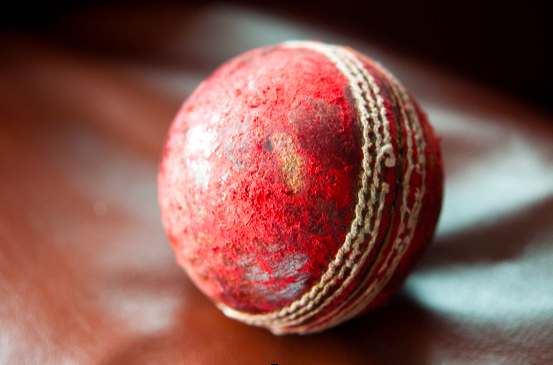
When the ball is delivered the bowler will release the ball with the seam angled in the direction he/she wishes the ball to swing, with the smooth side facing the batter.
As the cricket ball is moving through the air, a thin 'boundary layer' of air forms on the ball's surface; this boundary layer is unable to remain in contact with the ball all the way around its surface and therefore it has to separate from the surface at some point.
On the smooth side of the ball, the air in the boundary layer will have a laminar flow. This means that it has a smooth, ordered flow however it also means that it separates from the ball relatively early, around the apex of the ball. Conversely some air flows around the ball on the other side; due to the angle of the ball this means that the boundary layer is disturbed and the smooth laminar flow is 'tripped' by the seam into turbulent flow which is chaotic and will stay with the surface of the ball for longer due to its increased amount of energy.
The difference in these separation points on the surface of the ball creates a pressure differential which imposes more pressure on the ball in the direction the seam is travelling, causing the ball to swing in that direction.
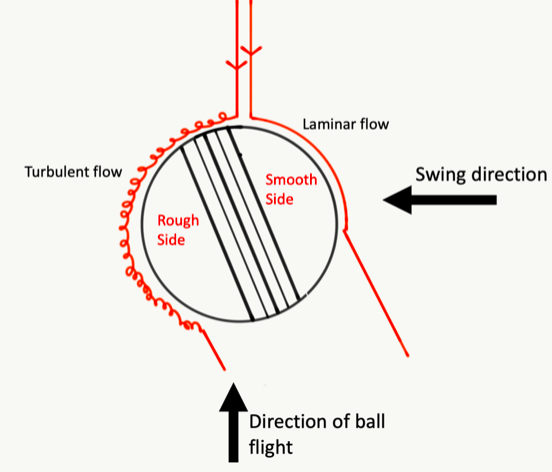
Reverse Swing
Throughout the match, the ball's condition deteriorates and eventually both sides of the ball become rough. Despite this, bowlers are still able to produce swing. However, the ball moves in the opposite direction to the direction of the seam.
Similarly to conventional swing, the bowler releases the ball with the seam at an angle. However due to the condition of the ball, there is turbulent flow on the boundary layer of the leading side of the ball due to its rough condition. This means that when the turbulent air flows around the other side of the ball and is tripped by the seam, the turbulent flow in the boundary layer becomes thicker and weaker causing it to separate from the ball earlier. This causes the separation points of the ball to switch (compared to conventional swing) and therefore the pressure acts on the ball in the opposite direction causing it to swing in the opposite direction to the angle of the seam.
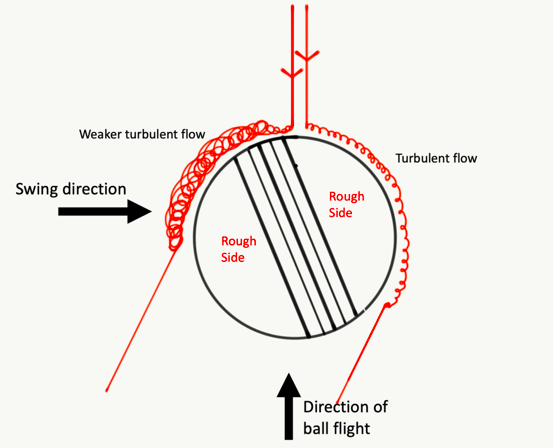
Reverse swing can also be achieved when the bowler is able to bowl the ball over 85mph. This is because the laminar flow in the boundary layer switches to a turbulent flow before it reaches the seam due to the high speed, meaning that it is again tripped into a thicker turbulent flow which separates from the ball earlier. This means that the pressure acts on the ball in the same manner as above causing the same effect of reverse swing but at much higher speeds.
Contrast Swing
Conversely to reverse and conventional swing, contrast swing is when the bowler releases the ball with the seam vertical with the rough side oriented to the side where the bowler wants the ball to swing. The process is similar to conventional swing with the smooth side of the ball demonstrating a smooth laminar flow on its boundary layer which separates from the ball early. The rough side of the ball again has a turbulent flow on its boundary layer which sticks to the ball for longer causing a lower pressure on that side and therefore the pressure acts to swing the ball in this direction.
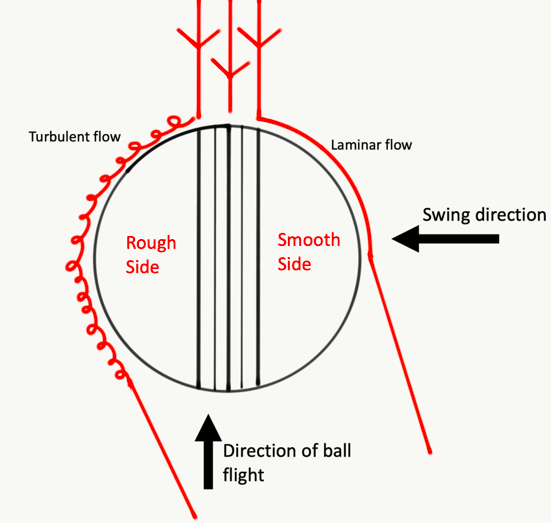
Maximising swing
According to Dr Rabindra Mehta's study the optimal conditions for generating the most lateral force (swing) on a ball was when it was bowled at 67mph and a seam angle of 20° with minimal wobble along the seam as well as a backspin of only 11 revolutions/second.
Furthermore, he found that bowlers who bowled at 80mph would experience no swing as the effect of the speed reduces the asymmetry of the pressure acting on the ball; meaning there is no pressure differential and so no lateral force is generated. In order for bowlers who bowl at over 80mph to generate swing they will need to produce reverse swing where the optimal speed of delivery is 90mph.
A common consensus between players and coaches is that the ball swings more when the conditions are damp and humid, however Dr Rabindra Mehta was unable to find any evidence to support this claim.
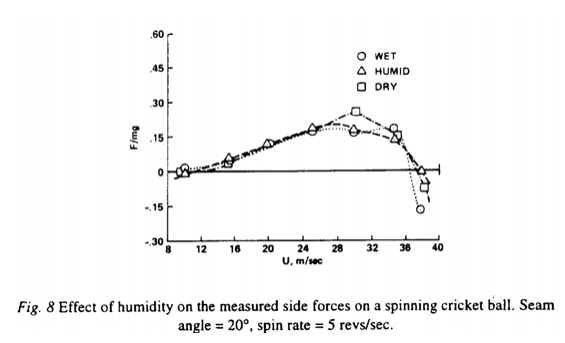
Instead, he suggests:
The tacky surface would ensure a better grip and thus result in more spin as the ball rolls-off the fingers, and... an increase in spin rate (at least up to 11 revs/sec) certainly increases the side force.
Rabindra Mehta's hypothesis on the effect of humidity on swing
In conclusion, the most swing is generated when there is a prominent seam and a clear contrast between the shiny and rough sides of the ball. This produces the greatest pressure differential between the two sides of the ball resulting in the greatest lateral force and therefore the most swing. If all of these come together Dr Rabindra Mehta found that it was possible to achieve a lateral movement of up to 0.8m during the flight of the ball.
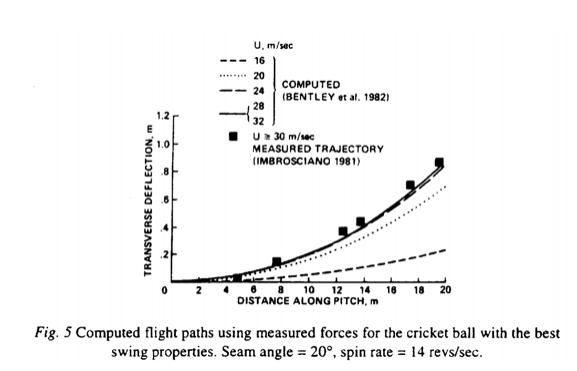
As shown above, there are three different types of swing; conventional, reverse and contrast swing; each generated from differences in pressures and flows from the two sides of the ball and when used effectively they are all able to deceive the batsmen and take wickets.
By Elliott C
